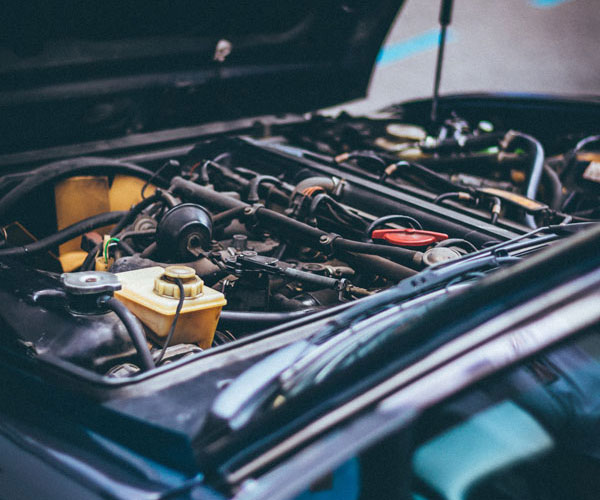
Photo by George Sultan
Aloha Hawaiʻi! Your car runs on fluids, mostly fuel, but there are seven other types to keep an eye on, some more often than others. In this guide I’ll cover how to check and refill your car’s fluids, from your windshield washer, engine oil, coolant, and more. Some fluids need to be checked regularly, others only every 50,000 miles or so. Some can be refilled easily while at your nearest gas station, and others need to be brought to a mechanic to be checked. Every engine is different, so the pictures aren’t going to be a perfect guide by any means, but the visual cues are similar, and we’ll do our best to help you find what you’re looking for. The one you’ll be refilling the most often is probably…
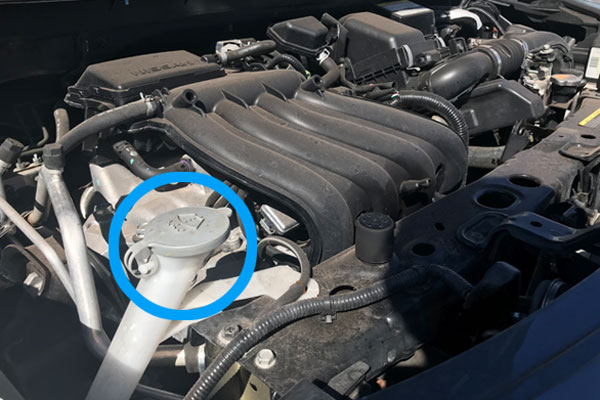
Photo by Julie B
Windshield Washer Fluid
Available at a gas station near you, windshield washer fluid is cheap and easy to replace. Once you’re low, look for the clear plastic tub, usually on the passenger side of your engine (although placement varies from vehicle to vehicle), marked by a windshield symbol. You can check your car manual for the exact symbol if you’re not sure. Pop open the lid and pour the washer fluid in carefully, and use a funnel if you’re worried about spilling. If you do spill, don’t worry too much, it’s only soapy water. Keep an extra gallon in your trunk, in a spot where it won’t roll around, so you won’t be caught out without it. That might be a good idea for our next item too…
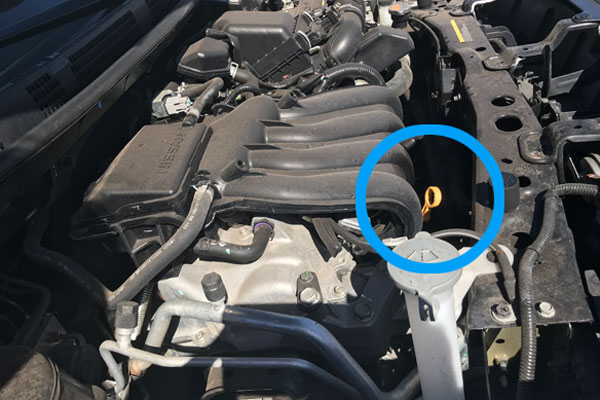
Photo by Julie B
Engine Oil
Oil is what lubricates your engine and keeps things running smoothly, and can be bought at your closest auto shop, or gas station. Running out can damage your vehicle and even cause it to stop functioning. For this reason it’s a good idea to keep tabs on your car’s oil level so you can keep it topped off between oil changes. First, wait until your vehicle has been sitting a while. To get a proper reading you want the engine to be at rest. You can find your oil tank which has two openings, one large unscrewable cap to add more oil, and a smaller opening that contains the dipstick, which usually has a small, circular, brightly-colored ring you can hold it by. Take out the dipstick and wipe it off, then reinsert it fully to get a correct reading. If the reading is low, check your car manual for the right oil to add to your engine. Use a funnel if think you might spill, as oil on the engine can cause fumes. Remember to get an oil change after every 3,000-5,000 miles.
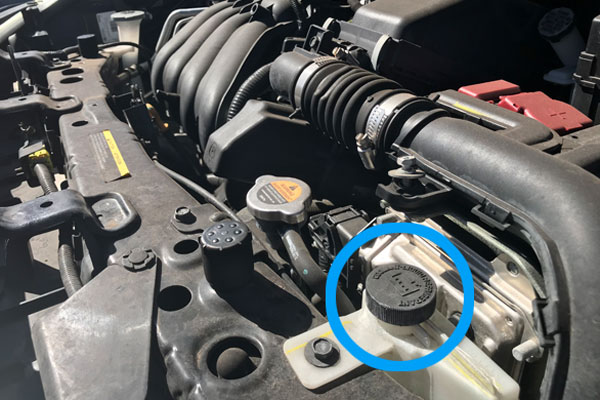
Photo by Julie B
Coolant
Unless you suspect a leak or overheating, you should only have to check your coolant, or radiator fluid, every 50,000 miles. Be careful to only check the coolant when the car is cool. If you check the levels while the engine is hot, or overheating, steam will escape when opening the cap and you can burn yourself quite badly. Check your manual to find out what type of coolant is best for your engine. If the levels are low, have a mechanic check for a leak.
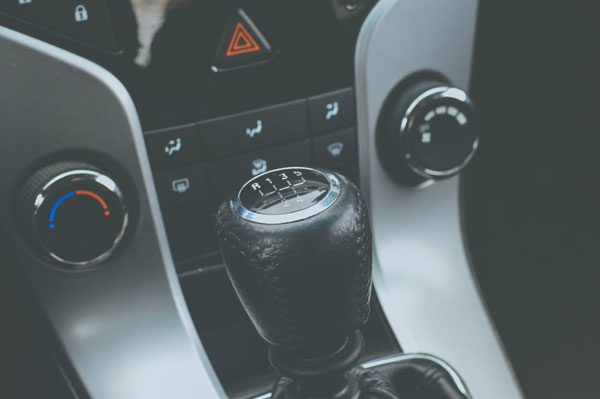
Photo by Raduz
Transmission Fluid
Your transmission fluid is another lubricant that keeps your car running smoothly. The fluid that’s in there should last the lifetime of the vehicle, but if you’re encountering transmission troubles, the best and cheapest first option is to check the fluid levels. The process for checking these levels depends on the vehicle. Some have access to the dipstick, others need a mechanic to check it. If you do have a dipstick for transmission fluid, check it the same way as you would the engine oil: Wait for the engine to be at rest, and wipe the dipstick before checking to get an accurate reading. If the fluids are low or black, it’s time to add more or change it completely. Check with your mechanic to add to your transmission fluid. Use your manual to find the symbol your vehicle uses for transmission, and to find the correct fluid type.
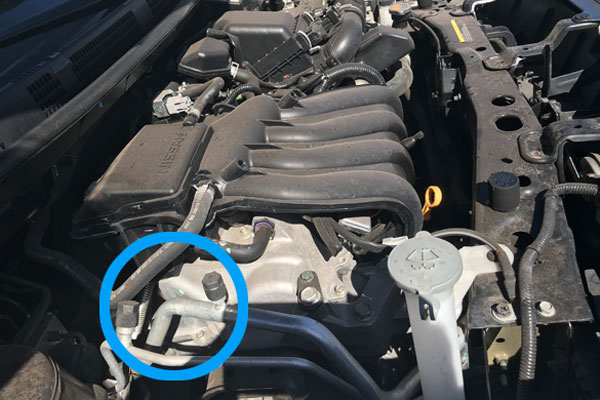
Photo by Julie B
Air Conditioning Fluid
The refrigerant inside your car is what keeps your AC running cool. You can’t check the levels with a simple dipstick, but if you purchase an AC recharge kit, or an AC Gauge and thermometer, you can monitor the amount in your engine and if it’s time for a refill. Look for the low side port, it will be a spigot attached to a larger tube, close to the compressor and the evaporator. Your engine should be on for this one, turn on the AC and engage the compressor clutch. Follow the instructions on your AC recharge kit to check the temperature and pressure. A mechanic can also do this for you if you’re not confident.
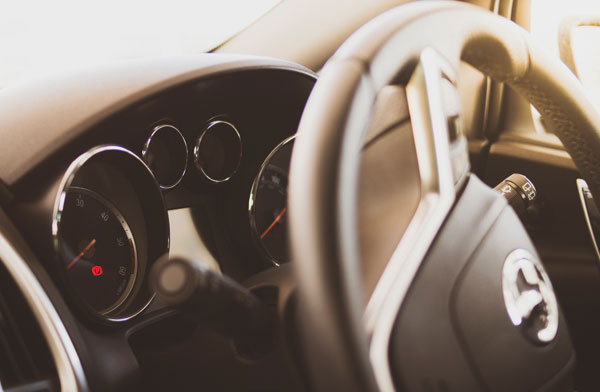
Photo by Dominika Roseclay
Power Steering Fluid
Responsible for lubricating your power steering components, this fluid can be checked anytime between 30,000-75,000 miles (the number is debated among the community). You normally shouldn’t have to change the fluid, but if you suspect a leak, bring it to your mechanic’s attention. The reservoir you’re looking for will say “Steering” on the cap. There’s not always a dipstick for this one, so you may need to inspect it visually. As usual, consult your manual for what type of steering fluid you need, what your vehicle’s corresponding symbol is, and ask your mechanic to check it if you’re unsure.
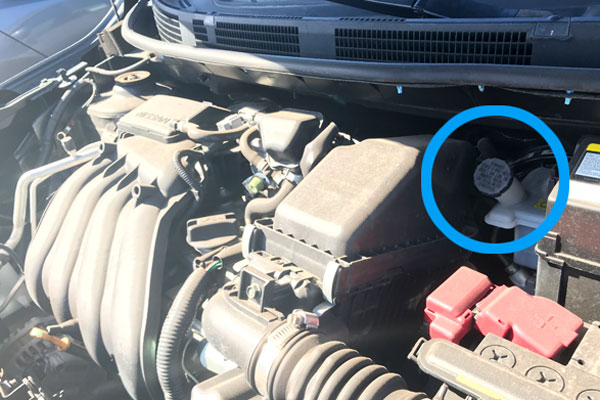
Photo by Julie B
Brake Fluid
The frequency with which you need to change your brake fluid changes widely from car to car; check your manual to see how often you should do this. You can normally find the brake master cylinder in the back of the engine. Check the fill line to see if your levels have dropped. The fluid should be close to the fill line, within half an inch. Be careful not to overfill. If the levels are dropping, it may be due to a leak, in which case your brakes should be inspected by a professional. Warning: Brake fluid is extremely toxic, wash your hands thoroughly after handling it, and if you’re feeling uncertain, have a mechanic take care of this for you.

Photo from Archive
Mahalo for Reading!
I hope you found this article on checking your car’s fluids helpful! If you’d like to learn some other maintenance tips, here’s 5 ways to improve gas mileage. Mahalo nui loa for reading, and next like you’re looking for a cheap solution for a gas station near you, think about signing up for our free membership at Big Island Energy Company! Aloha, a hui hou!
ShareOCT

About the Author:
Julie is Big Island Energy's Social Media and SEO Specialist.